Billy Belton looks back on his years playing bass with pioneers such as Freddie Keil and The Kavaliers, The Newsounds, Ray Woolf and the Avengers, and Trinity of Tommo’s Place.
First published on the late Andy Shackleton's wonderful website NZ Musicians’ Memories in January 2009, updated October 2016, and reproduced with permission.
--
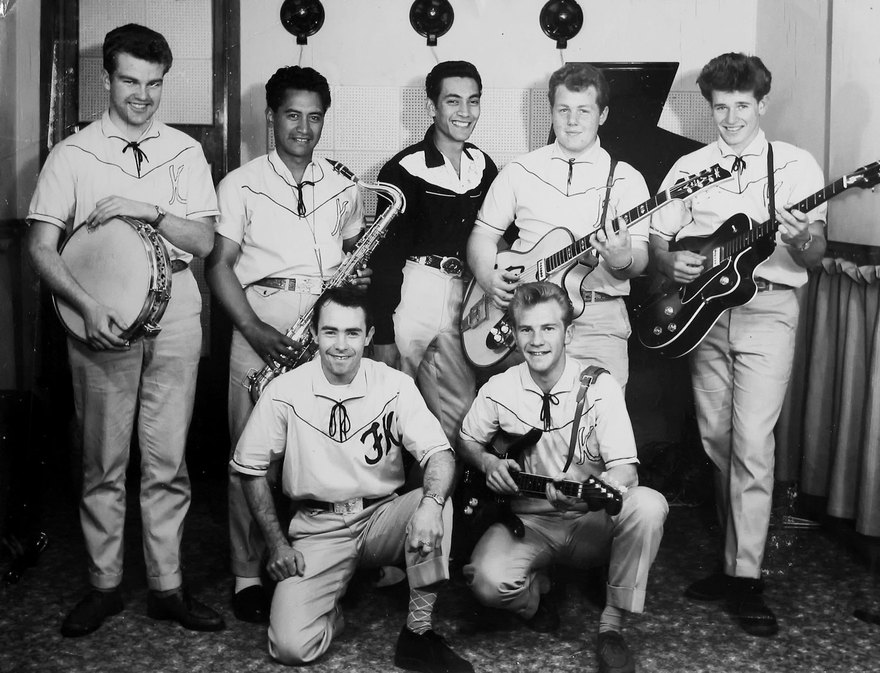
A later line-up of Freddie Keil and The Kavaliers. Back (L-R): Vic Williams, Dave Paul, Freddie Keil, Billy Belton, Jimmy Murphy. Front: Dave Smith, Brian (Tuffy) Smith - Phil Warren Collection
Freddie Keil and The Kavaliers
Freddie Keil and The Kavaliers from Billy Belton’s perspective as a member for five years.
I don’t know the exact details of the actual birth of The Kavaliers as I joined after it had been formed; about two years, as far as I can ascertain.
Freddie Keil came from the Keil Isles dynasty and, due to some split-up, formed his own bands: first The Zodiacs and then The Kavaliers. A German-Samoan, he had the looks of a tanned Elvis and worked as a drycleaner, so his stylish clothes imported directly from America were immaculate. (Remember in those times the only way to buy imported clothing or even Levi’s jeans was from seaman off the English ships in our ports, as all clothing was locally made.) He was sharp, and the ladies adored him. He was an organised and dynamic band leader, he chose our clothes, our playlists, and we all enjoyed working for him without any disagreements.
His voice was a bit pitchy but his delivery of the songs plus the total package more than made up for this. He had a constant supply of American recordings so we were able to do covers of all the popular American music. We followed the styles of Bobby Darin, Fats Domino, Chuck Berry, Elvis Presley, and all the American singers at this time. During this period a lot of New Zealand bands were following either the old English pre-Beatles sound or were “Orchestra Type” or “Trad Jazz” dance bands.
I had a ball playing with the band from 17 years old for about five years as a rhythm guitarist. (The bigger bands had a distinct lead or rhythm guitarist and players didn’t swap tasks.) We had Jimmy Murphy as our more-than-competent lead guitarist for most of the time until Billy Peters (a very showy echo-effect type showband player) joined us in the later days when Jimmy went to America to pursue his singing career. This changed our guitar sound from the jazz/big band style of Jimmy’s full bodied Levin semi-acoustic cutaway to Billy’s Stratocaster that sounded more Shadows-style. We had a raunchy tenor sax player called Dave Paul who was joined at various times by a number of other tenor sax players, mainly from one of the Māori showbands to give the big sound of twin saxes that we listened to on radio in this era.
On bass guitar we had Brian (Tuffy) Smith – remember bass guitars had only just been invented in the late 50s – and David (Little Dave) Smith on piano. He still plays keyboards today. He was a fabulous, music-reading piano player who could play like Floyd Cramer or Fats Domino. He had a car and a big amplifier which enabled me to originally get started with bands, as I had neither being 14 and still at school. I gratefully owe him my first chances in music.
Dave helped me when, as a school boy, I took a bus to answer a newspaper advertisement to join firstly a dance band which then led to Jeff Bolton’s Commodores. This band had two great guitarists, Bob Wynyard later of The Sundowners and then Sonny Manahera. Also, a short stint with a Shadows Band featuring Tuhi Timoti on lead guitar before we joined The Kavaliers together. My music interest started with a few years of classical piano lessons. I was then taught guitar by The Keil Isles – a hugely successful band – as they lived next door. My parents had bought me an electric guitar that I loaned to Herma Keil in exchange for guitar lessons.
The Kavaliers drummer was Vic Williams, who we now know as a food and wine expert. The story started when I bumped into him in Queen Street one day in about 1961. He offered Little Dave and I positions in The Kavaliers that were being vacated by their guitarist Johnny Bradfield and a piano player called Jimmy Langabeer. Brian (Tuffy) Smith also replaced “Yuk” Harrison at this time. Yuk later played with The Brew, Max Merritt’s Meteors, and The Invaders among others. This was a huge break for Dave and I in that it meant we had made it into the successful league of bands playing nearly every night. I was able to repay Vic’s huge favour years later when I was able to offer him the drumming spot at Tommo’s Place after drummers Tony Hopkins and Frank Gibson Jr had left. (This band was Trinity with Mike Harvey and originally Ray Woolf which evolved much later into Salty Dogg.)
The Kavaliers recorded 11 singles and an LP – all covers of American music – plus the band backed countless other artists for the Zodiac record label, as this was before session musicians and it was usual to use complete bands to back other solo artists on recordings. I don’t ever remember receiving any money for these recordings but we were happy to do them and just loved playing music anywhere anytime.
The Kavaliers recorded 11 singles and an Album – all covers – plus the band backed countless other artists.
A reward for both The Keil Isles and The Kavaliers was the large mainly American cars that we all owned. We had various Chevy Impalas, Pontiacs, Ford Customlines, Dodge Diplomats, Zephyr Zodiacs, Little Dave even had a brand new EJ Holden Premier, and later after Max Merritt came to town with his red XK150, I bought a string of Mark II Jaguars. These were all purchased by our excellent earnings from the continuous work. We even encountered our first tax problems which we didn’t understand but we ended up paying off IRD and thereafter being in the tax system, which I imagine was quite rare amongst musicians then.
One great experience was when we travelled to Christchurch for the weekend to play at one of their top venues; I think this was our first time on an aeroplane. At this time bands only played in their own areas and didn’t tour. Most weekends we played at a regular circuit of rural Waikato Halls and we had a great following around this area because of it. The Kavaliers also played regular “Teenage Club” gigs in suburban halls with crowds of up to 1000 coming to hang out and dance at the same spot each week. There were a few fights but without drugs and alcohol they normally had a great atmosphere and were very “happy” places to play to receptive audiences.
We admired the Māori showbands and whenever possible went to watch them at the Māori Community Centre by Victoria Park. They were the best musicians around and had slick presentations. They had choreographed moves well before The Shadows, à la the American groups. They executed precision dance moves, they played guitars behind their heads, and they played two or three players to one guitar. We copied many of their routines as best we could and they allowed us to sit in with them at times, which was most enjoyable and taught us a lot. It was not uncommon for musicians from different bands to fill in for each other and do one-off gigs together, it was a friendly time for musicians, and we all knew each other well.
Eventually the laws changed and Sunday night movies came in, pubs opened later with live bands, and the “Teenage Clubs” which formed the mainstay of our work closed. The beginnings of dedicated venues arrived and we started a regular spot at a place called The Shiralee later to be called The Galaxie, a huge amount of bands played here as it ran six nights a week plus Sunday afternoons, with two stages featuring at least two bands plus guest solo artists.
The Meteors and Invaders came to town, The Beatles became popular and the sound of bands changed. Eldred Stebbing of Zodiac Records called Dave (sax player) and myself to a meeting without any warning and sacked us on the spot to downsize the band, for economic reasons plus he wanted a different sound. I was stunned, as the rest of the band didn’t even speak to us either before or after, despite five years of playing together and friendship. Not long after The “new” Kavaliers called The Freddie Keil Five took a residency in Noumea for six months where they eventually broke up and Brian Smith [bass] never came back, he still lives there. For me it was a blessing as I was forced to change to bass and found as much work as I wanted until I retired in the mid 70s.
These were exciting lucrative times for all teenagers, and being a successful musician with lots of money was a massive bonus, and I was fortunate to have been there. It was wine, woman and song, except there was no wine, we didn’t drink at all (Freddie was a Mormon), and we weren’t even aware of drugs. Yes, we all enjoyed ourselves without artificial stimulants and I’m sure we had more fun.
If only we could turn the clock in Auckland back to then, ahhhhhh…
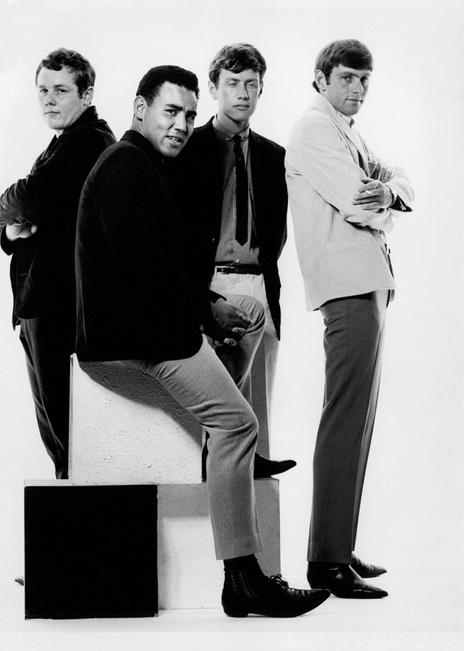
The Newsounds with Billy Belton, Al Patchett, Laurie Simpson and Ian Laird - Phil Warren Collection
The Newsounds
The Newsounds was an Auckland group that was not widely known. Without a couple of excellent recordings plus having Ray Woolf in the line-up it would be largely forgotten.
The group, unusually, had no personnel changes from beginning to its end and comprised of Laurie Simpson (organ), Brian Biddick (trombone), Rod Gibson (sax), Ray Woolf (vocals), Al Paget (leader and guitar), Ian Laird (drums). and Billy Belton (bass).
This group was a follow on from the very popular and successful Al Paget Sextet with its leader, naturally, being Al Paget. This was a great sounding “formal dance band” that played at the popular dance venues. Before breaking up they changed their style to be an early rock n roll band. Al Paget was a perfectionist and his musical input into any group he played with was “get it perfect, and always get it right.” The venues they played at consisted of church and public halls, hired by businessmen, to run dances on a weekly basis. The music style was designed for people to foxtrot, quick step, and waltz. A great many marriages started from these popular dance halls.
Alex Paget, whose real name was Patchett, was a school/music teacher and a fine guitarist. Although his Al Paget Sextet went through a number of personnel changes it always sounded great as he seemed to gather good musicians around him. He was an organised, disciplined musician and therefore reliable for promoters, and as a band leader he was a lovely man to work for.
I met Al when I went to him for guitar lessons. I had played rhythm guitar professionally for about seven years but had never had either the opportunity or ability to play lead breaks or instrumental solos. Bands of this era had either lead or rhythm guitarists and the job didn’t swap, so I went to Al to be “taught” lead. I found I had very little talent for this, but as the band Freddie Keil and the Kavaliers that I had played rhythm guitar with for the last five years had just booted me out (they were downsizing) I had a problem.
I sold my Fender Jazzmaster guitar and started to play a 62 Fender Precision bass through a Fender Bassman amp (previously used by Bill Wyman of The Rolling Stones). I was lucky to get my first lessons from Billy Kristian, the master bassist, who was totally available as he was laid up in bed sick. Playing bass came rather easier than lead guitar and certainly brought in very steady work for many years to come.
Back to The Newsounds. Al called me, as his current band had apparently disbanded. He still had plenty of work offers, so he needed a replacement singer, a bass player, and a drummer. Al had discovered that the band in which Ian Laird and I had been playing, the Bob D Five – my first bass job – had just broken up so he offered both of us a job. I can’t remember if Ray called me or I called Ray ,but I jumped at the chance to be in a band with him. We all went along to a rehearsal that Al had called. I was surprised to see Laurie Simpson, a classmate from Mt Albert Grammar, complete with a church-type organ (at school I had no idea he was even a musician), a sax player ex-Al Paget Sextet named Rod Gibson, and Brian Biddick, a classical trombone player from an orchestra, were all in attendance.
Playing with two guitars, an organ, and horns rocked. To be in front of this wall of sound really gave you an unforgettable musical buzz.
It was a very different line-up but under Al’s musical leadership we immediately made an interesting sound. Laurie’s organ was an ex-church twin-keyboard organ with bass pedals amplified through a Leslie unit that made it sound like a Hammond organ. (Laurie’s father was a minister so we never asked where it came from.) When the organ was combined with the sounds from Al’s guitar, playing lines with the trombone – an instrument usually associated with trad jazz bands – and a tenor sax, we had a very distinct sound. These horn players were of a very high standard and they could wail. We embarked on more than a year of regular “dances” (the venues of the day, such as Saturday in Mt Eden, Wednesday in Symonds St, and Thursday in Otahuhu). Plus we did regular “gigs” at venues called “Prestige Ballrooms” owned by Phil Warren. The work was enough to allow us to be full-time musicians, but this band was made up of members that all had good full-time day jobs. The work was hard and when travelling and rehearsals were thrown in we worked very long hours, but in return made very good money.
We all indulged in expensive American or European cars as was common for successful musicians from this period and is probably still the same today. Due to our unique sound and the regular appearances we built up a dedicated following and the dances were always well supported. We recorded several singles, [but] – like most New Zealand music from this era – without any radio airtime they didn’t sell and no one ever heard them. These recordings almost stand up today despite the primitive recording studios where they were made, mainly because of their musical quality and the distinctive sound of this band. Al played a Gretsch Country Gentleman guitar, clinically perfect with no effect pedals, and it had a great but thin twangy sound. Ray Woolf as usual was superb and his renditions of ‘All Night Worker’ and ‘Over You’ were both horn-based gospel/blues numbers. After about 12 months the gigs closed and the band members moved on. Laurie went to the Canary Islands and married a Spanish girl, Al moved to England, and I believe Brian still plays in symphony orchestras. Rod continued as a hairdresser and I don’t know if he plays, and I have no knowledge of what happened to Ian Laird. We all lost touch but luckily through a couple of recordings the sound has been preserved.
After The Newsounds disbanded, Ray and I started Ray Woolf and the Avengers. A new band, with a new sound designed to move with the changes happening in music.
The Newsounds were a disciplined, clinical band right at the time where I was learning bass guitar so it was good band to assist this process. The time of six or seven-piece bands had now gone as promoters said they were too expensive and popular music didn’t need them. I’m certainly glad I experienced a few before they went like the dinosaur. Playing with two guitars, an organ, and horns rocked. To be in front of this wall of sound really gave you an unforgettable musical buzz.
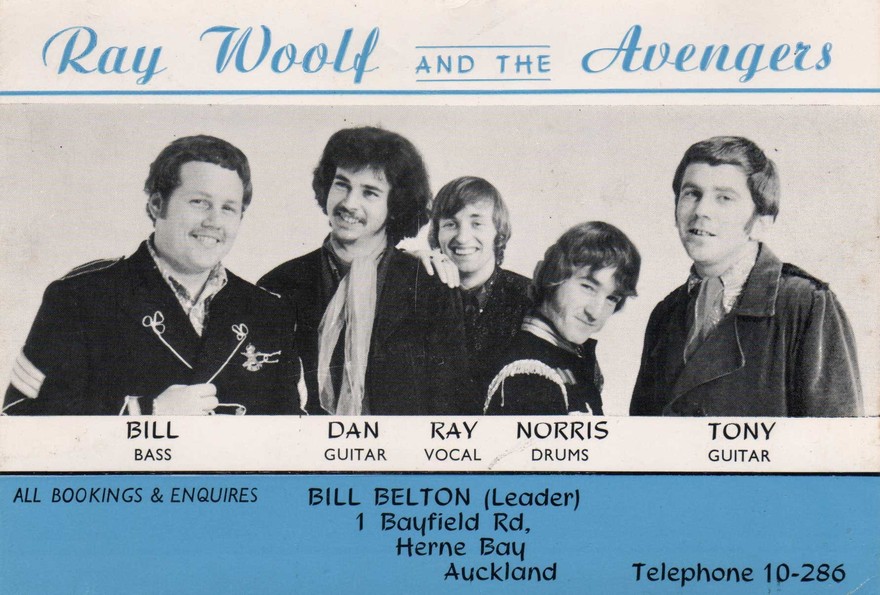
Ray Woolf & The Avengers: Bill Belton, Danny Stradwick, Ray Woolf, Norris Nutsford and Tony Blomfield
Ray Woolf and the Avengers
The exact date or year I can’t remember but it would be when Andy Shackleton recalls joining, as he was the first drummer.
Ray had been a good friend of mine since the days of when he was 16 and a Zodiac recording star, he was being managed by Eldred Stebbing, our recording guru.
I met him as I played guitar with Freddie Keil and the Kavaliers, for five years. This group backed many other artists either in stage shows or on recordings as well as the tours of the day especially at Christmas. It was an amazing period: we played at least five nights every week and did dozens of recordings.
Ray had temporarily retired and had settled down somewhere in rural South Auckland to bring up his family where I briefly lost contact with him. When I found him again we decided to put a band together.
We contacted various friends such as Tommy Ferguson, a singer with an amazing vocal ability, Tony Blomfield an excellent “Shadows” type guitarist of the day, Bob Pattinson a keyboard player who also had a famous and rare [at the time] Vox organ, plus Andy Shackleton, a drummer from Wellington who had come to Auckland to play with the Premiers at the Top Twenty in Durham Lane.
As personnel changed so did the sound and style of the band. Ray Woolf could sing anything.
Another guitarist we had playing with us Red McKelvie later to be a huge country player mainly on steel guitar, just left one day without a word to seek his fortune in Australia and an amazing guitarist called Danny Stradwick replaced him. Dan was the “Clapton” of our era and made sounds with his Gibson ES335 guitar that most guitarists could only dream of. He was a natural and stood out from the Fender/tape echo players of the day and could raise the hairs on your neck with an improvised solo.
We were, I guess, another covers band like many of the bands of this time. But we were also given unreleased 45 records from overseas to get material from to play and sometimes to record as was the case with ‘You’ and ‘Crystal Ball’, a Loxene Golden Disc finalist. These were our most radio-played records.
The band went through a huge number of amicable personal changes. Tommy left to join The Brew after a coin toss with Ray to see who would go. Bob I believed joined Gray Bartlett, and Tony showed he was also a more than competent keyboard/piano player. He was a complete surprise to me at the time, but a great asset in any band that had him. Sadly, Andy left to return to Wellington and we were joined by a new drummer, Norris Nutsford, who tragically died of cancer at a far too young an age soon after we disbanded.
As personnel changed so did the sound and style of the band, Ray could sing anything.
The group did a lot of shows because of Ray’s high stature in the New Zealand music scene. Some dances we organised ourselves in local halls and we also did about 10 recordings on, firstly, the Zodiac label and then RCA. The music was blues to Beatles and Motown amongst the playlist. I remember one show where all we played was ‘Dust my Broom’, ‘Gimme a Little Sign’, and then Ray came on and we did the whole Sgt Pepper album exactly from the Beatles LP.
We never had a regular job/residency which was the backbone of work for many longer lasting groups and this probably led ultimately to our demise.
Eventually we did the famous Christmas tour of various sound shells at beach resorts and on returning in January with little work prospects dissolved into several other working bands. Ray, of course, was always the star and carried on a successful solo career which apart from a few breaks has continued to this day.
This was a moderately successful band but had some absolute top players. Andy was, in my opinion, the best drummer of this period. Danny had the best blues sound of any guitarist of the time, and Tony – both on guitar and piano – was an exceptional musician with vast technical skills.
Ray, well he is – in my humble opinion – the best all-round pop, standards and rock singer New Zealand has had for 40 years or more. These were great times: we were young, and we were paid well for doing what we loved. Just making music …
[This is] written as best I can recall after about 45 years, so it may contain some out of sequence ramblings. But my memory of any musician’s ability is as clear now as it was then, it was my privilege to have made music with all of them, and I love them dearly.
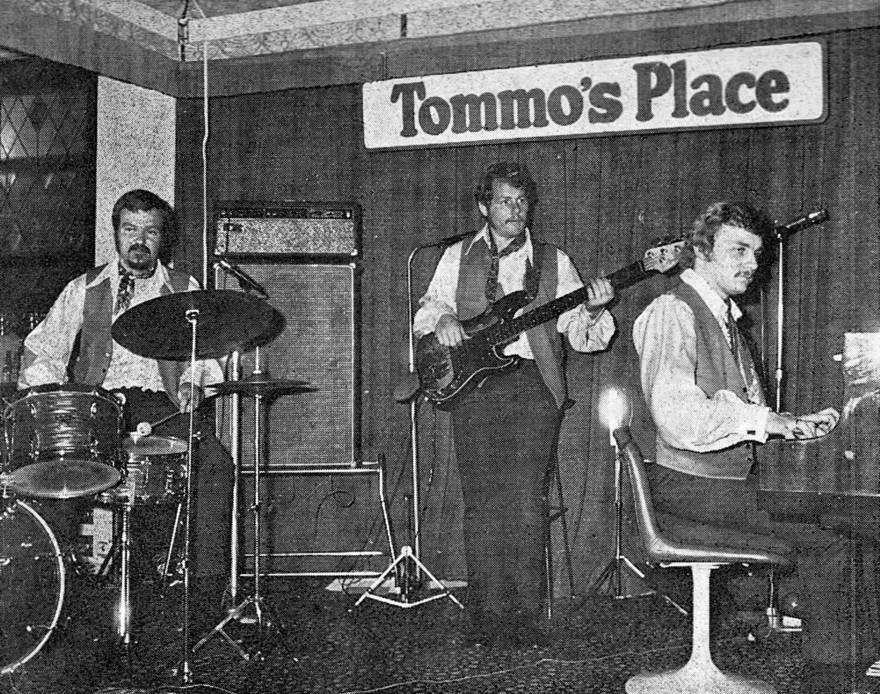
The Trinity at Auckland's Station Hotel, 1970: Vic Williams, Bill Belton and Mike Harvey
The Trinity of Tommo’s Place
I was there from the beginning, and almost to the end of about a five-year residency, and these are my memories. – Billy Belton, bass player.
The Station Hotel gig was originally being done by The Mike Walker Trio, with Ray Woolf adding his great vocals and myself on bass. The tiny stage was located in a corner of a shabby hotel dining room on the fifth floor of the Station Hotel (Beach Road, Auckland). The nightly diners were made up of out-of-town travelling salesmen staying overnight in the hotel, off-duty police, and the horse-racing fraternity out for drinks. Most of these people really only wanted to drink, eat, and talk, and a band was an unwanted distraction, even a nuisance.
After about 12 months Mike Walker and Frank Gibson Jr left to do other work leaving Ray and I to put a new band together.
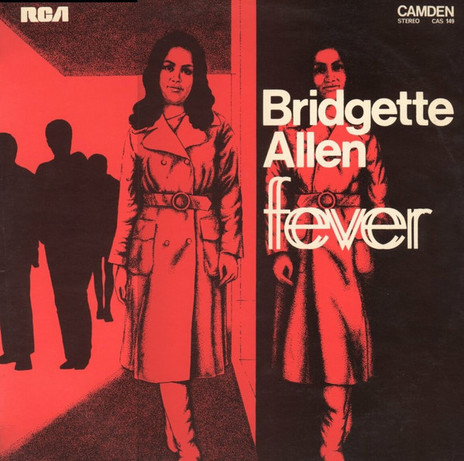
Bridgette Allen's Call Me Bridgette album, aka Fever, was recorded live at Tommo's, with backing band Trinity: Billy Belton bass, Vic Williams drums, Mike Harvey piano. It consists of pop standards such as the title track, Misty, The Look of Love, and River Deep Mountain High (RCA Camden, 1973).
We somehow enticed Vic Williams the ex-Kavaliers drummer out of retirement to join us. We auditioned for a piano player – an almost impossible task after Mike Walker – and an incredibly fast-playing piano player from Mt Eden turned up, called Mike Harvey. This kid sure knew his way around a piano but totally lacked any regular rhythm as he hadn’t played in a band, and came from a music reading, classical background. We sent him home with some Sérgio Mendes records and about two days later he returned playing perfect time and note-perfect copies of the complete Sérgio Mendes LPs. The rest is history. Mike Harvey went on to achieve fame as a musician plus he became a leading songwriter, Silver Scroll winner, a top session musician/arranger, and perhaps New Zealand’s most recorded piano player before he moved to Australia years later.
A promoter Bob Wynyard (not the Sundowners’ guitarist) decided to turn the dining room into a cabaret with guest artists performing floor shows four nights a week. The venue was redecorated; a bigger stage was built with proper stage lights, and a decent sound system was installed. The room was named Tommo’s Place after the hotel’s owner, Tom Madgwick. Guests from the hotel plus the people that came in for “dine and dance” evenings filled the room nightly.
It was a popular happening place for Aucklander’s to have an entertaining night out, and it had its enthusiastic regulars packing the place night after night.
The new band for Tommo’s Place band was named Trinity and we played there nightly for the next five years, what a fantastic residency to score. During this time we had a number of band singers that included Ray Woolf, Freddie Keil ex-Kavaliers, a gangly good looking kid called Bradley Reeves (he’s still singing jazz with Billie Farnell), and Jill later to be Harvey after marrying Mike Harvey. Vic married the dining-room manager, and before this we all went out with a number of the waitresses, most of whom were on a working holiday from Australia. This band played all types of music and was equally able to cope with requests of “play ‘Ten Guitars’” from drunken diners.
After five really enjoyable years, I reluctantly left trinity and within a year gave up music, never to play again.
We backed weekly floor shows made up of every top New Zealand and Australian cabaret performer. They included Howard Morrison, Bridgette Allen, Martin Kini, Toni Williams, Julie Anthony, Ray Columbus, Mr Lee Grant, Rob Guest, Noel McKay, Bill & Boyd, Hogsnort Rupert, John Hore, John Rowles, Frankie Rowles, Craig Scott, plus many more from Australia. We were sometimes joined for these shows with a guitar player or a brilliant Colin Hemmingsen on tenor sax, and tin whistle. Four live LPs were recorded during the floor shows. This was a tough ask for the backing band as you only had one shot to get it right, hence the odd “bum” note that still makes you cringe when listening to these LPs today.
On a Saturday night at midnight Trinity would move its gear to a late-night scene called The Colony Club. Until we arrived it was a pleasant restaurant with a quiet band. At 1am it turned into a screaming rock venue and a fresh crowd packed in to join the existing diners. This was a wild place: it was noisy and we played loud upbeat rock until four in the morning. It was a great therapeutic release after quieter dinner music all week. There were countless fights, beautiful women everywhere, and it was the place to be seen, get drunk, and have fun. Being in the band didn’t restrict us from joining in all of the above with great gusto.
Mike was the only full-time musician in Trinity as he also did recording sessions during the week. Vic and I worked 40 hours or so at our day jobs. This was incredibly tiring and by Sunday we just slept, ready to start the week all over again.
After five really enjoyable years, I reluctantly left the band and within a year gave up music, never to play again. I was totally worn out from working over 70 hours a week for more than 10 years straight. My last gig after Trinity was with the very talented Linn Lorkin (then called Linda Williams) on piano and vocals, John Williams a wild-spaced out Scotsman on drums, and Herbie Mann on guitar. We played at a restaurant/club in Albert Street doing semi-Jazz, Latin, and Carole King-type numbers. We were sometimes joined on drums by Marc Hunter of Dragon fame.
For me this gig was a bit of a let-down after Tommo’s Place as, although the musicians were good to work with, the place was near empty most of the time. By then Trinity were getting so much work it needed to have full-time musicians, plus the group toured with the Miss New Zealand Show which was owned by the Station Hotel’s new owner, Charles Moeller.
Tommo’s Place eventually closed and the band moved to a cabaret on the shore called the Ranch House where Trinity reinvented itself as a new band called Salty Dogg. They later moved to a residency at Granpa’s nightclub. This really great-sounding rock band will no doubt be talked about later by one of its members: Vic Williams (drums), Mike Harvey (keyboards), Graham Chapman (now deceased) doing vocals, and Martin Winch on guitar.
--